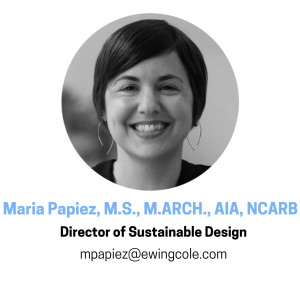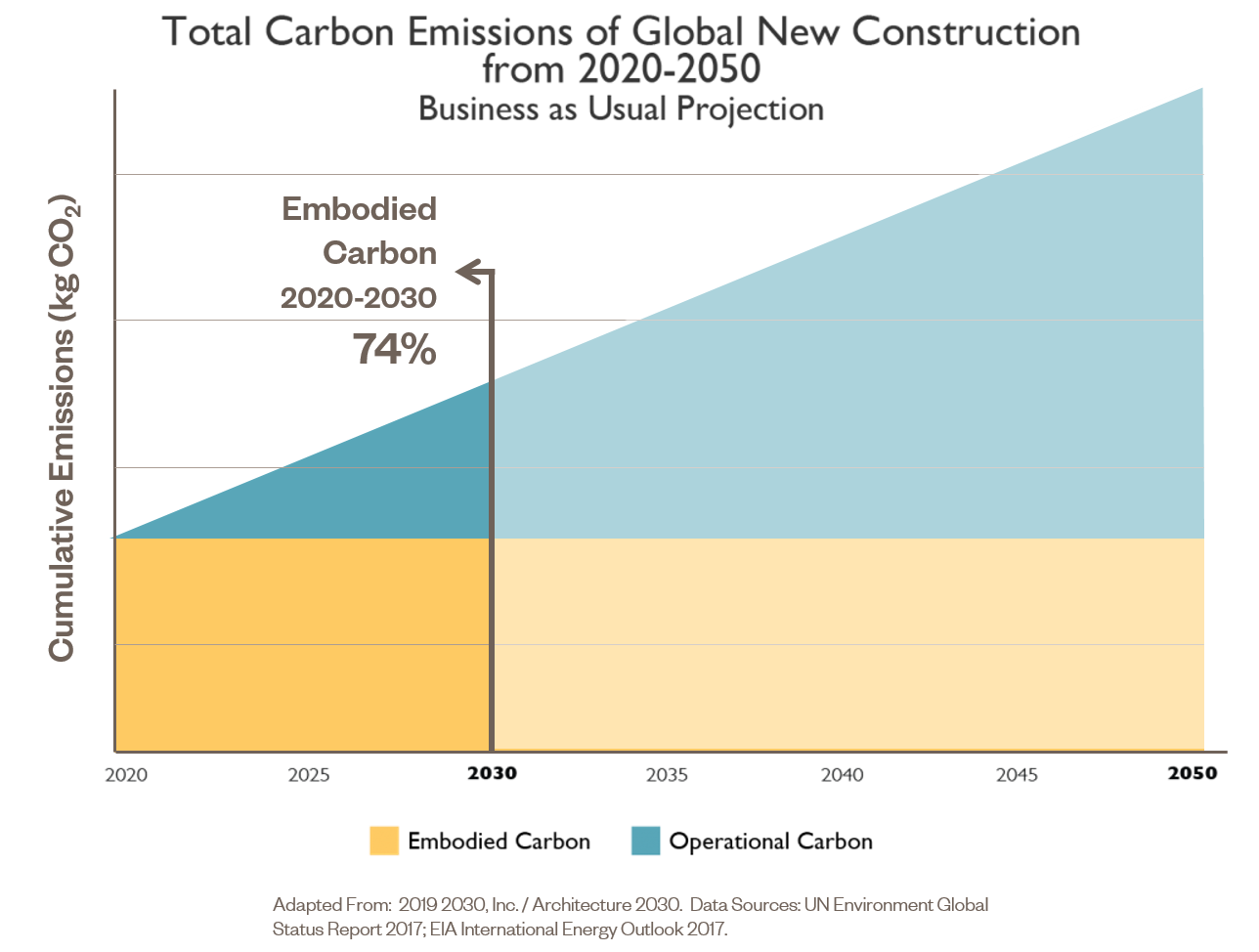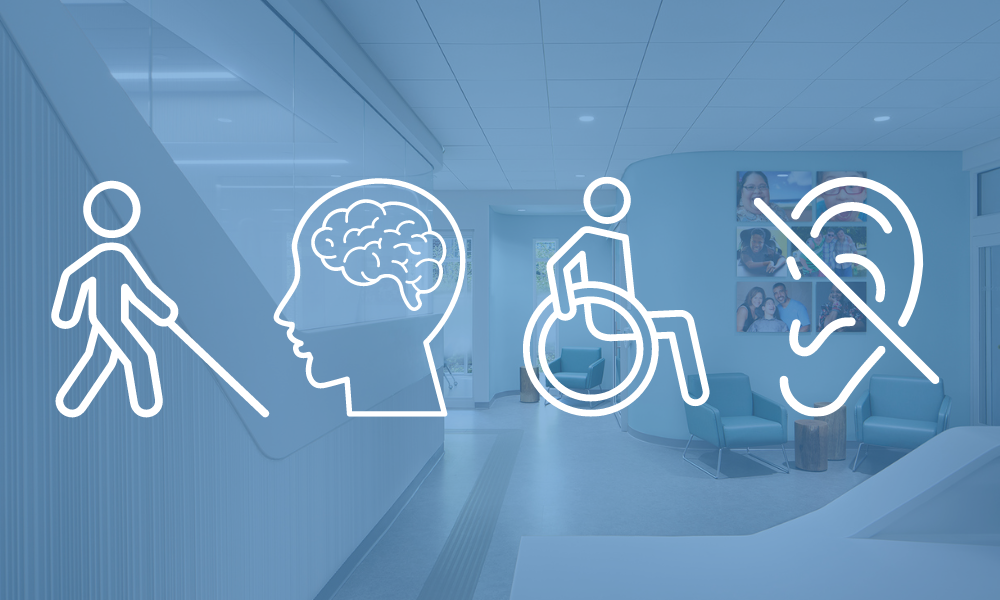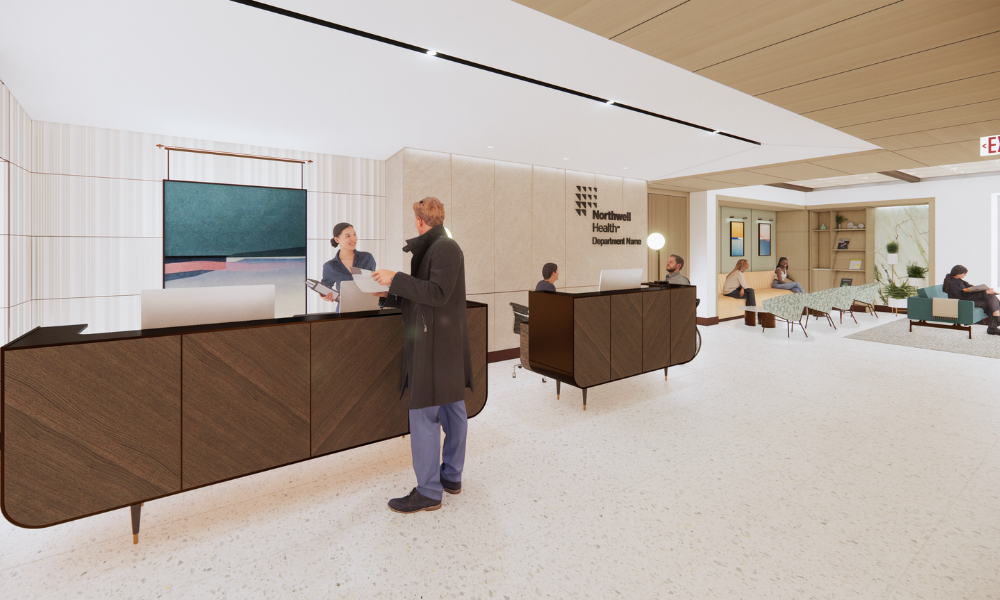
Let’s Talk About Carbon: Decarbonizing the Built Environment
As architects and engineers, it is our professional responsibility to protect the health, safety, and welfare of the people in our buildings and the environment in which they inhabit. The most effective way for us to do this is to significantly decarbonize the built environment now.
 Let’s be clear about something before we get started. Carbon isn’t the villain – it’s the foundation of life on this planet, but too much of it in the atmosphere has repercussions. The built environment contributes 39 percent of total greenhouse gas (GHG) emissions globally every year.[1] To keep the worst of climate change in check, global scientific agencies state that we need to stay below 1.5oC of global temperature increase [2] and we are fast approaching that threshold.
Let’s be clear about something before we get started. Carbon isn’t the villain – it’s the foundation of life on this planet, but too much of it in the atmosphere has repercussions. The built environment contributes 39 percent of total greenhouse gas (GHG) emissions globally every year.[1] To keep the worst of climate change in check, global scientific agencies state that we need to stay below 1.5oC of global temperature increase [2] and we are fast approaching that threshold.
As architects and engineers, it is our professional responsibility to protect the health, safety, and welfare of the people in our buildings. Part of that responsibility is to support future generations and reduce GHG emissions that contribute to climate change. The most effective way for us to do this is to significantly decarbonize the built environment over the next ten years.
Two Kinds of Carbon
GHG emissions from buildings come in two forms; operational carbon emissions - heating, cooling, lighting, and providing services for buildings - and embodied carbon emissions. Embodied carbon includes the GHG emissions from the extraction, manufacture, transportation, and eventual recycling or disposal of materials. The embodied carbon of a building is established on day one of occupancy. In contrast, operational carbon emissions from a building accrue over time, with another percentage each year adding to the building's total carbon footprint. At present, embodied carbon is around one-quarter of that 39 percent of total GHG emissions from the building industry. However, as operational energy efficiency continues to increase due to improving building performance codes and commitments to zero net energy, the impact of embodied carbon continues to grow.

Sustainable design typically focuses on long-term goals – buildings that serve their communities for many decades while also supporting life for generations to come. To maintain that long-term focus, designers must quickly navigate new short-term priorities. Given the 10-year window we have, today's carbon emissions matter most. That isn't to say that we should throw out all our progress with energy efficiency, but we need to focus on reducing embodied carbon equally.

The primary steps needed for deep decarbonization of the atmosphere from the design and construction industry are straightforward:
- Improve energy efficiency in existing and new buildings to reduce operational energy use.
- Convert to fully renewable energy sources for remaining building operational energy needs.
- Reduce the amount of embodied carbon in building materials.
We’re now expanding and interweaving those steps into our design process, making them actionable for our integrated design teams.
Accounting for All Carbon Early
We must look at operational energy and embodied carbon together, beginning at the earliest design stages. It isn't nearly as effective to model one after the other when trying to optimize both since decisions about one impact the outcome of the other. We are building our embodied carbon modeling workflow to fully integrate with our energy modeling process, with targets and evaluations established for each design phase.
Balancing Complex Trends
We target evaluation of the modeled outputs by different time horizons, starting with the first, critical 10-year window, and extending throughout the typical lifetime of a building. These different time horizons allow us to compare complex trends such as:
- The GHG emissions profile is dominated by embodied carbon during the early life of a building.
- Buildings constructed in coming years will be more operationally efficient than those built today.
- The fuel mix for regional utilities will continue to incorporate more renewables. While we can't predict these timelines exactly, we know the trends exist and we consider them as we design today.
Forecasting the Future
We can't rely on old data in our models. For building energy modeling, this means using projected climate data along with historical climate data while evaluating how to design adaptive buildings for an uncertain climate future. We know the climate is changing and that temperatures are rising, and the importance of designing buildings that stand the test of time cannot be understated. We also know that projected climate data is precisely that - a forecast based on the best scientific understanding to date. By pairing energy modeling runs using projected climate data along with those that still use historical data, we can form a clearer picture of the range of performance options to consider.
Reducing, Reusing
We think critically about reuse and durability. This includes the reuse of existing buildings whenever feasible, as well as designing for the reuse of new buildings. Reusing existing buildings is almost always the highest-yield sustainability decision when considering GHG emissions. All materials have a footprint, but if we can leave the structure and building envelope of an existing building in place, we maintain half to three-quarters of that building's total embodied carbon by current measures. Not all buildings are adaptable for new uses, so when we replace them we must consider how to provide for flexible use in the future.
Transitioning to All Electric
We consider setting buildings up to be fully electric because we understand the role they can play in the renewable energy grid of the future. While some building types can be effectively supported by electrically supplied systems today, others need time to adapt due to climate, intensive heating energy use, or continuously maintained critical energy loads. Our engineering teams actively study and design onsite renewable energy generation and storage systems for some of these market sectors while also designing for future adaptation and electric-ready buildings.
Modifying human behavior and known patterns is challenging, yet we know that moving thoughtfully and rapidly at the same time is critical. To do so, we are focusing our efforts across the firm by discussing priorities, developing resources, and embedding workflows, while also engaging opportunities on each project. This is a lot change for the industry to handle, but we can succeed. We must all strive to move forward, together.





